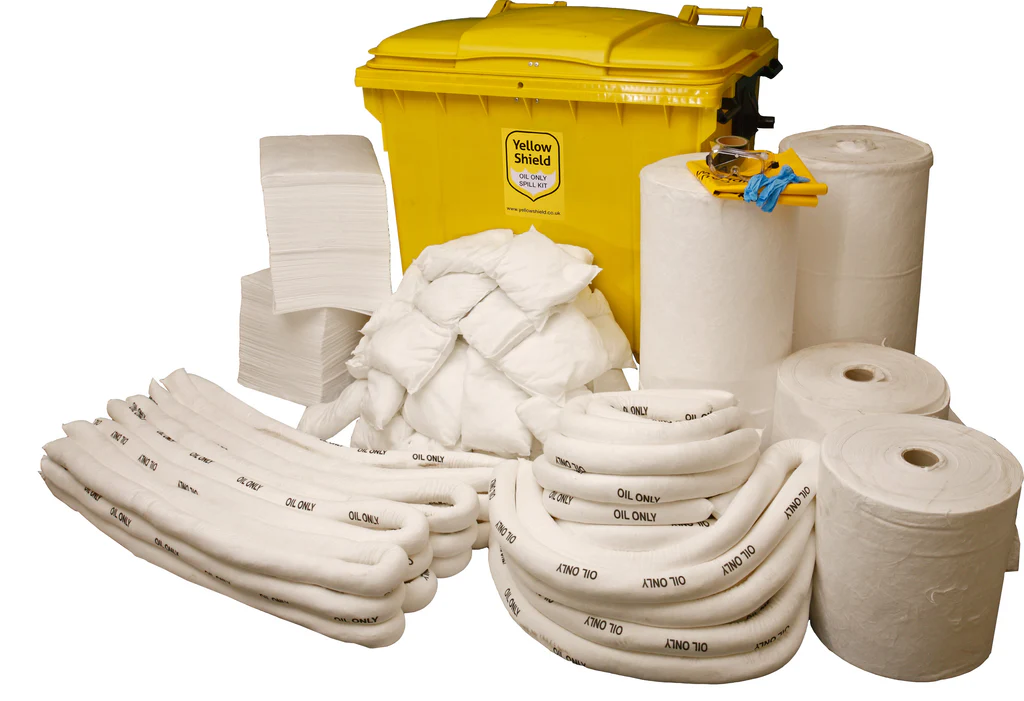Spills happen. Whether you’re a professional working in an industrial setting, a homeowner with a well-stocked garage, or someone who enjoys tinkering in the workshop, being prepared for a spill can prevent a small incident from escalating into a major disaster. A spill kit is your first line of defense in containing and cleaning up spills, protecting yourself, the environment, and your property.
But what exactly goes into a spill kit? This blog post will take you through the essential spill kit items list, helping you understand their purpose and choose the right kit for your needs.
Understanding Spill Kits
Spill kit items list comes in various sizes and configurations, designed to handle different types and volumes of spills. The specific contents will vary depending on the anticipated hazards, but some core components are essential for most spill response scenarios.
Essential Spill Kit Items:
- Absorbent Materials: These are the workhorses of your spill kit, designed to soak up spilled liquids. Here’s a breakdown of some common types:
- Absorbent Bags and Jars: These are versatile and can absorb a wide range of liquids, including oil, water, and some chemicals.
- Absorbent Boom Socks: Selective absorbents, these soak up oil and fuel-based liquids while repelling water. Ideal for spills on water or near waterways.
- Granular Absorbent Bags: Loose, absorbent particles, often used for larger spills or uneven surfaces. They are particularly effective for viscous liquids.
- Personal Protective Equipment (PPE): Protecting yourself from exposure to hazardous materials is crucial. Common PPE in spill kits include:
- Safety Goggles: Shield your eyes from splashes and chemical fumes.
- Nitrile Gloves: Chemical-resistant gloves protect your hands from contact with spilled liquids.
- Disposable Coveralls: Offer full-body protection from contaminated materials.
- Respirator (Optional): For spills involving hazardous fumes or dust, a respirator is essential for safe breathing.
- Disposal Bags and Ties: Once you’ve contained and absorbed the spill, you’ll need a designated way to dispose of contaminated materials. Look for heavy-duty plastic bags with twist ties for secure closure.
- Caution Tape: Establish a safe zone around the spill site using caution tape to prevent people from coming into contact with contaminated areas.
- Dustpan and Broom: These tools come in handy for collecting smaller spills or loose absorbent materials after cleanup. Choose a dustpan with a lid to prevent residual contamination.
- Spill Kit Bin: A sturdy container is essential for storing your spill kit and keeping all the components organized and readily accessible. Choose a bin that’s easy to carry and clearly labeled for quick identification.
Choosing the Right Spill Kit Items List
The ideal spill kit for you depends on several factors:
- The types of liquids you work with: Identify the most common liquids you handle (oil, water, chemicals) to determine the appropriate absorbent materials.
- The size of potential spills: Consider the volume of liquids you might encounter and choose a spill kit with enough absorbent capacity.
- Regulations and Workplace Safety Standards: Certain industries or workplaces may have specific regulations regarding spill kit contents.
Here are some additional spill kit considerations:
- Biohazard Spill Kits: These kits are designed for cleaning up spills involving bodily fluids or biological materials.
- Secondary Containment: Some kits may include spill trays or berms to contain spills further and prevent them from spreading.
- Neutralizing Agents (for specific chemicals): For spills involving acidic or alkaline substances, spill kits may include neutralizing agents to safely render the spilled material less hazardous.
Beyond the Essentials:
While the core items listed above form the foundation of a spill kit, some additional components can enhance your preparedness:
- Decontaminant wipes: Useful for cleaning up spills on tools or surfaces after the main spill has been contained.
- Flashlight: For spills in low-light conditions.
- Spill Response Guide: A quick reference guide with instructions on how to handle different types of spills safely and effectively.
Remember:
- Training is key: Having the right spill kit is essential, but knowing how to use it effectively is paramount. Invest in spill response training for yourself and anyone who might use the spill kit.
- Regularly inspect your spill kit: Check the expiration dates on PPE, ensure absorbent materials are in good condition, and replace missing or damaged items promptly.
By equipping yourself with the right spill kit and the knowledge to use it, you can confidently manage spills, minimize environmental impact, and protect yourself and others from harm.


